In order to avoid unpleasant consequences and live without fear of a dangerous disease, you need to know how you can become infected with tuberculosis, in which cases a person can not only become infected, but also get sick.
Bacillus Koch
The causative agent of tuberculosis is Mycobacterium, Koch's bacillus. This is a very resistant bacterium covered with a capsule. It is thanks to this capsule that the bacterium can persist for a long time in environment even at high and low temperatures, as well as to stay in the body for a long time without causing any symptoms. Especially for a long time, it can be stored in a dry and dark room and in dust.
For example, MBT can exist in dust for up to 10-12 days, at a temperature of -23º - up to 7 years, but when exposed to direct sunlight, it dies within 4 hours. Reproduces by simple division into two cells. With long-term treatment with anti-tuberculosis drugs, the virulence of the bacterium, the ability to grow and multiply in the body, i.e. its drug resistance.
According to the main clinical forms:
- Tuberculosis intoxication in children and adolescents.
- Tuberculosis of the respiratory organs.
- Tuberculosis of other organs and systems.
By bacterial excretion:
- With the isolation of Mycobacterium tuberculosis (MB+).
- Without isolation of Mycobacterium tuberculosis (MB-).
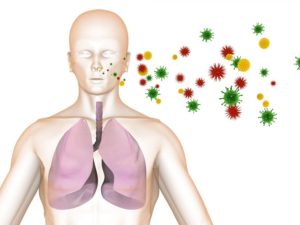
Mycobacterium tuberculosis is transmitted mainly from person to person, but can be transmitted through food and blood. It is important to know the ways of transmission of infection:
- Airborne - the bacillus is released with breathing, coughing, sneezing. When coughing, the distribution radius is 1.5-2 meters, when talking, droplets of saliva and sputum are sprayed, large drops quickly settle on the floor, and small ones are in suspension for 1-1.5 hours. In 90-95% of cases of infection, the culprit is the airborne route.
- Settling on the floor, the bacilli mix with dust, and can also enter the body. This is an air-dust path of distribution.
- Alimentary - eating products from sick animals (more often these are dairy products), eating from infected dishes. Meat in this regard is less dangerous, since it is subjected to heat treatment before consumption.
- Contact - infection can occur through mucous membranes and damaged skin.
- Intrauterine - the rarest way. Infection occurs from a sick mother to the fetus.
Potential sites of infection
Every person, probably, at least once in his life wondered whether focal pulmonary tuberculosis is contagious or not. To determine how not to get infected with tuberculosis, one must have an idea of the possible places of infection and ways of transmission of the disease.
Dangerous places in this respect with the presence of a patient with an active form of pulmonary tuberculosis will be a hospital ward, a group in kindergarten or a school class, a prison cell or barracks in the army, as well as an apartment shared with such a person. Although an apartment can be a place of infection not only when living with a sick person, but also when new residents move in where a person died of tuberculosis, if epidemiological treatment has not been carried out there. The new tenant in this case becomes infected by airborne dust.
IN Everyday life, despite the fact that mycobacterium enters the body most often by airborne droplets, very few get sick. The immunity of a healthy person is designed to protect against all kinds of microorganisms, special defender cells are released in the blood, which neutralize and destroy them. Even if a few bacteria remain in the body, they are under the control of the immune system, and do not manifest themselves in any way. For a person, this process goes unnoticed, without any clinical symptoms.
To get sick, you need direct contact with a patient with tuberculosis around the clock for 2 months. If the person with whom there was contact took treatment for at least two weeks, or was sick sometime in the past, then the risk of getting sick is reduced to zero.
Risk factors
If the immune defense of the body is weakened, tuberculosis becomes contagious, and the mycobacteria that are in the dormant state in the body begin their vital activity.
Factors that reduce immunity:
- Stress
- Long-term illnesses
- HIV infection
- Drug addiction, alcoholism, smoking
- Elderly age
Children and teenagers
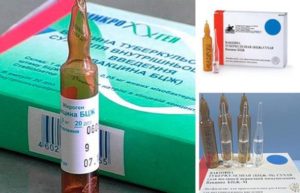 A separate category in the classification of tuberculosis is children's intoxication. Every child is vaccinated with BCG at birth. It is an anti-tuberculosis vaccine derived from a live bovine TB bacillus that is so weakened that it cannot cause the disease, but provokes the production of antibodies against it. That is, the child's body, as it were, gets acquainted with this disease, and in the future, when a bacillus enters, the protective cells already present in the blood fight the infection.
A separate category in the classification of tuberculosis is children's intoxication. Every child is vaccinated with BCG at birth. It is an anti-tuberculosis vaccine derived from a live bovine TB bacillus that is so weakened that it cannot cause the disease, but provokes the production of antibodies against it. That is, the child's body, as it were, gets acquainted with this disease, and in the future, when a bacillus enters, the protective cells already present in the blood fight the infection.
It is believed that BCG, subject to revaccination at 7 years, is valid up to 15 years. Throughout childhood, an annual Mantoux test is carried out. This is a reaction to infection with mycobacteria. If the reaction is positive, it means that the children are infected, but do not get sick. Such children receive prophylactic treatment, even if they do not have clinical manifestations.
Development of the disease
Incubation period, i.e. the period of reproduction of bacteria after entering the body, which is asymptomatic, averages 6-8 weeks. Initially, the disease is manifested by nonspecific signs of inflammation (fever, weight loss, weakness, cough). At this stage, the diagnosis can be established using a tuberculin test.
In the future, two specific signs appear: a tuberculous tubercle and a complication of inflammation in the form of cheesy necrosis. They are noted on the X-ray image during the fluorography process. Sputum is also examined for the presence of mycobacteria. If observed positive result, tuberculosis in this case is contagious.
 To determine whether pulmonary tuberculosis is contagious, it is necessary to examine biological secretions for the presence of mycobacteria. If a bacillus is found in the sputum, then this person is considered to be a bacterial excretor, and he has an open form. This means that when a person coughs, talks, sneezes, he releases dangerous bacteria into the environment, and you can get tuberculosis from him.
To determine whether pulmonary tuberculosis is contagious, it is necessary to examine biological secretions for the presence of mycobacteria. If a bacillus is found in the sputum, then this person is considered to be a bacterial excretor, and he has an open form. This means that when a person coughs, talks, sneezes, he releases dangerous bacteria into the environment, and you can get tuberculosis from him.
There is also the concept of a "closed form", in which bacteria are inside the body, but are not found in biological fluids. Accordingly, there is no risk of infection. The insidiousness of this type is that it is very difficult to establish a diagnosis, and the disease can quietly go into an open form.
Contagiousness of tuberculosis of other organs
With the flow of blood and lymph, the infection can penetrate the bones, brain, kidneys, liver and other organs. In this case, theoretically, a person cannot be contagious, since bacilli are not released into the environment. But in practice, a patient with tuberculosis of any other organ also has a pulmonary form of the disease. There may not be an infectious focus in the lungs, but the bacteria, however, are still contained there, so a person is contagious in the same way as a patient with focal or infiltrative pulmonary tuberculosis.
Reasons for visiting a doctor and methods of prevention
Contacting a phthisiatrician makes sense in the following situations:
- In close contact with a patient with tuberculosis for a long time. For example, people living in the same apartment, who are in a close relationship (kissing, sexual relations), close relatives of the patient.
- In the presence of severe diseases that cause a decrease in immunity, as well as with long-term treatment with chemical preparations.
- People suffering from drug addiction, alcoholism, AIDS patients.
- If there was contact with the patient.
- If signs of infection or inflammation are found. Namely, a long-term rising body temperature within 37º, weakness, fatigue, weight loss, enlarged lymph nodes, cough, chest pain, hemoptysis.
Tuberculosis is undoubtedly a dangerous disease that claims many lives up to the present day, but the situation is not hopeless. If everyone takes care of their health, periodically undergoing preventive examinations, lead an active lifestyle, play sports, go to fresh air, do not have bad habits, then the risk of getting sick will be reduced to almost zero. If dangerous symptoms nevertheless appear, then timely treatment will allow you to start treatment on time and prevent the development of the disease and subsequent complications.
Tuberculosis causes the death of many people around the globe. A dangerous variety of this disease is an open form of tuberculosis. A person with this disease, in a short time, infects a large number of people nearby. With this form of the disease, the causative agent of infection - a tubercle bacillus (Koch's bacillus) is excreted by its carrier with sputum. hallmark pathogenic microbes are considered to be survivability and resistance to acidic and alkaline environments, and even to certain types of antibiotics.
When elementary rules of hygiene are ignored, the open form of tuberculosis, the symptoms of which are difficult to distinguish from signs of other diseases, is spread by airborne droplets, household or contact methods. Pulmonary tuberculosis, the open form of which is treated exclusively in stationary conditions, has become so widespread among the population. An open form of tuberculosis, the risk of which is increased for people leading an asocial lifestyle, is also dangerous for other, prosperous categories of the population.
What is open tuberculosis
The open form is determined by bacteriological examination of sputum or other secretions of the patient. In contrast to the results of a study of a closed form, Koch's wand is found. In the case when a repeated study showed that there are no bacteria in the secretions, it means that the patient has a closed form of the disease.
These two terms are more commonly used for pulmonary tuberculosis. But bacterial excretion also accompanies other types of tuberculosis, for example, of the intestines, lymph nodes or organs of the reproductive system. Bacterial excretion (MBT+) is an important indicator that indicates the level of infectious danger of a sick person. After all, they "catch" the disease when communicating with a person who secretes tuberculosis mycobacteria. The open form of tuberculosis has an incubation period of 3-4 weeks, after which the symptoms become pronounced.
Photo 1. An open form of tuberculosis is transmitted by airborne droplets from person to person
In some cases, the insufficient power of laboratory tests does not allow detecting mycobacteria in the sputum of patients with open tuberculosis. As a result, being medically non-infectious, they are dangerous to the people around them.

Photo 2. Inflammation of the lymph nodes in some cases contribute to the emergence of an open form of tuberculosis
Symptoms of the disease
The development of an open form of primary pulmonary tuberculosis is observed in those who have not been in contact with the pathogen. The nature of the course of the disease is secretive, and in those places where the infection has taken root, inflamed areas appear. The lesion turns into caseous (curdled) and after a while calcifies. This pathological process is determined by an X-ray of the chest organs.
The secondary open form of tuberculosis is characterized by scarring and calcification of lesions. There are patients in whom the pathology occurs with pneumonia or enters other organs with the bloodstream. Since the organs resemble millet, this form is also called "miliary tuberculosis." Milium is Latin for "millet". In such cases, there is a brightness and variability of symptoms. After a few months, the disease reaches its peak.
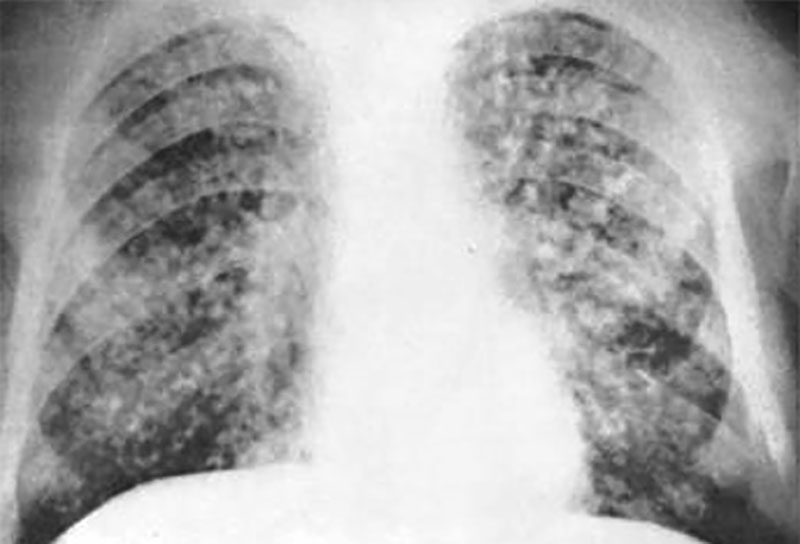
Photo 3. Miliary tuberculosis (lat. Milium - "millet") on x-ray, so named because of the resemblance.
The open form of tuberculosis is expressed by symptoms:
- persistent cough that cannot be cured with medication or folk remedies, coughing up blood;
- elevated body temperature (37.1-37.8 degrees);
- lack of appetite, and, as a result, weight loss;
- pain during inhalation;
- night sweats;
- weakness and shortness of breath.
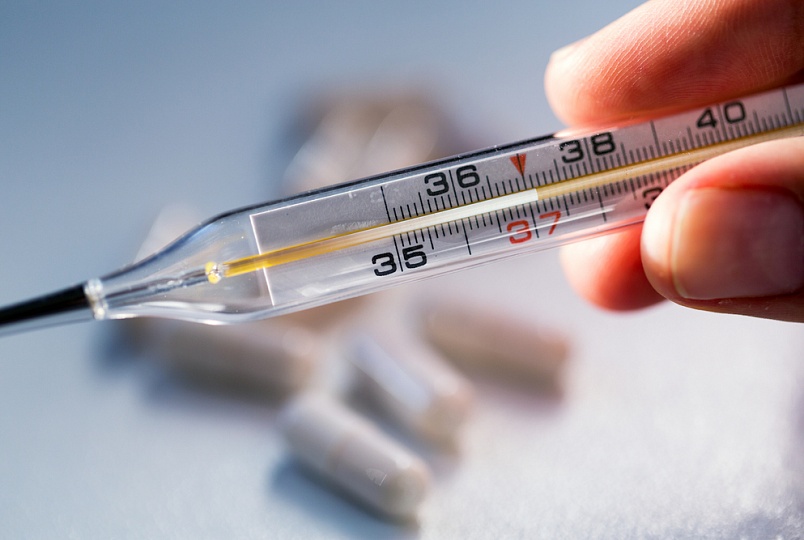
Photo 4. Increasefever accompanied by fever and cough - a common primary symptom of tuberculosis
If the infection hit the child, then, in addition to the listed symptoms, he becomes irritable, lethargic. In addition, his school performance decreases, insomnia and digestive disorders appear.

Photo 5. Children are at risk for an open form of tuberculosis, the disease is accompanied by increased moodiness and fatigue
Diagnosis of an open form of tuberculosis
Diagnosis is laboratory and instrumental. The first is in the study of sputum, blood and urine. The second involves the use of endoscopy methods and radiography. Fluorography is a screening mass method of instrumental research. It is valuable in that with a slight X-ray load using this method, a clear result is obtained about the state of the lungs and intrathoracic lymph nodes. Fluorography is carried out once every two years. However, for high-risk groups, an annual study is recommended.
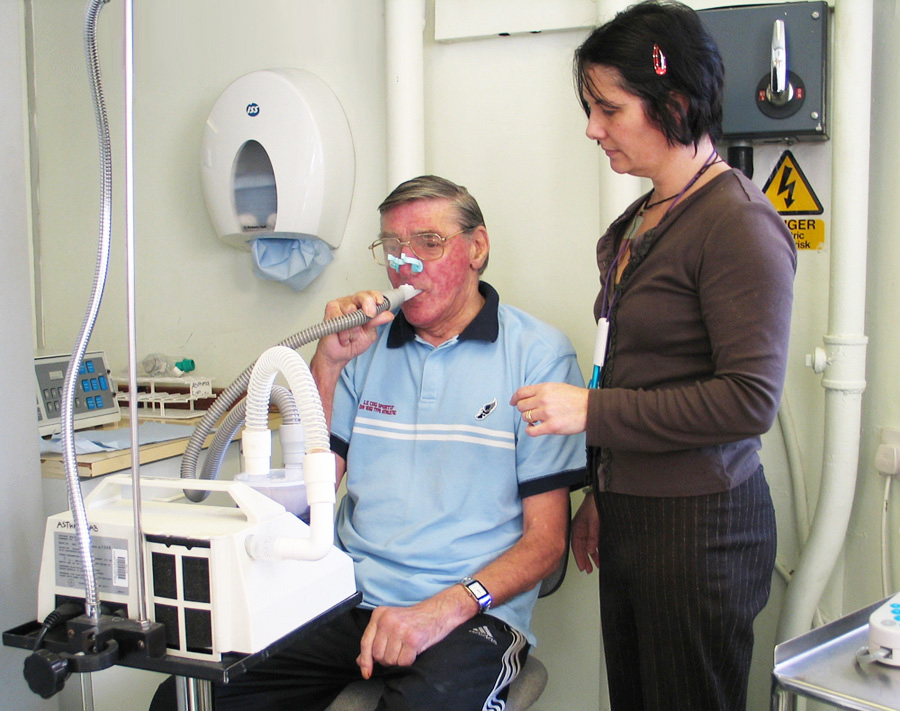
Photo 6. Diagnosis of tuberculosis by sputum analysis in the lungs. Before this, three deep breaths and exhalations are performed.
For advanced diagnostics, x-rays of the chest cavity are taken (in 2 projections). To clarify the density of formations and their localization, in some cases, they resort to computed tomography.
The method of laboratory diagnostics includes sowing on BC. This method is cultural. With its help, mycobacteria are grown in a nutrient medium and it is determined how sensitive they are to drugs. Whether the body is infected with Koch's bacillus is determined by microscopy. And with the help of PCR diagnostics, a search is made in the patient's biomaterial for DNA or its parts of materials that belong to mycobacteria. In addition, with the help of molecular genetic methods, they understand the sensitivity and resistance of the pathogen to drugs.
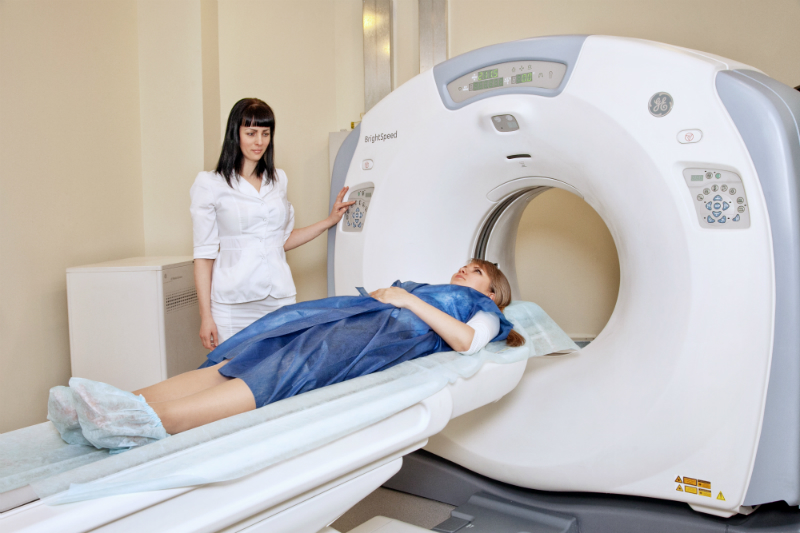
Photo 7. To more accurately determine the condition of the lungs, computed tomography (abbreviated as CT) is used.
Methods of treatment
If an open form of tuberculosis is diagnosed, treatment takes place in a special medical institution. Self-treatment of the disease is useless and dangerous. If drugs are taken uncontrollably, mycobacteria develop resistance to them. As a result, treatment becomes more difficult. Tuberculosis of the lungs of an open form is treated - from six months to two years.
Therapy that inhibits the infection is carried out continuously and systematically. This allows you to stop the progression of the disease. A person with an open form of tuberculosis is treated in a special department of a hospital, where he stays for at least two months. This time is sufficient to localize the process of active production of bacteria.
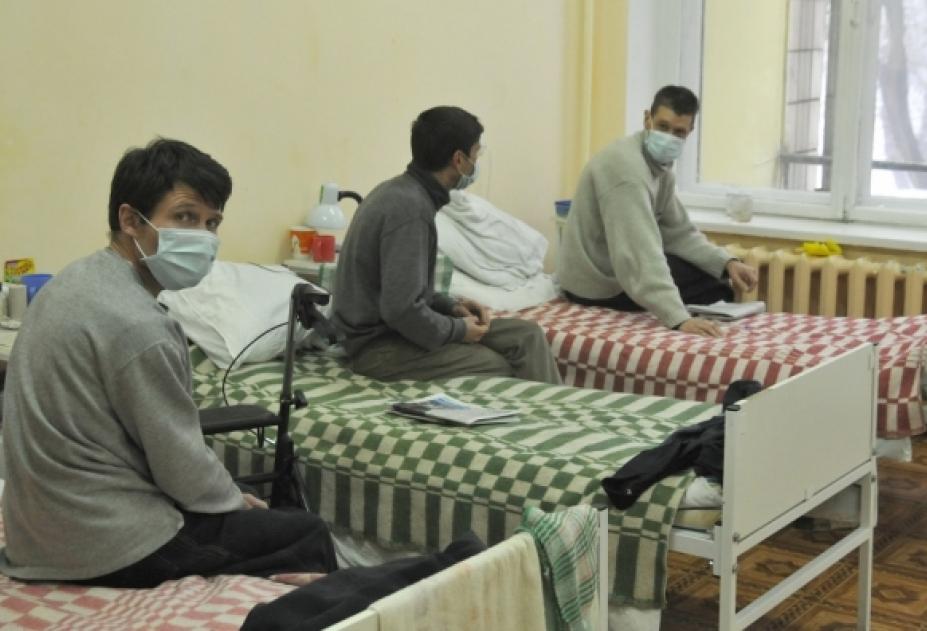
Photo 8. At first, tuberculosis treatment takes place in a special hospital in order to avoid infecting others.
The increased risk to others is reduced and the patient is transferred to outpatient treatment. Anti-tuberculosis therapy consists in the use of a certain scheme. Its basis drugs: pyrazinamide, streptomycin, isoniazid, rifampicin and ethambutol. An effective combination of these drugs is selected by the doctor individually. This takes into account the state of the person and his immunity.
The table shows the daily doses of drugs for people of different ages.
If at the end of the course of treatment the desired result could not be achieved, the combination of drugs is subject to adjustment. In addition, the methods of introducing drugs into the body are changing. At the end of treatment, examinations are carried out, which determine the patient's state of health. If recovery does not occur, treatment is extended.
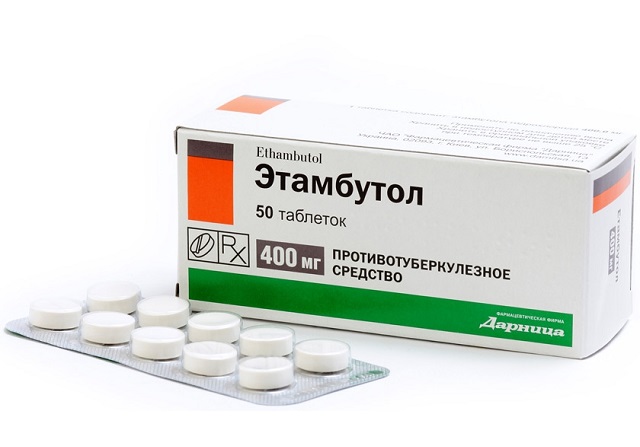
Photo 9. Ethambutol - a medicinal anti-tuberculosis drug helps to stop the reproduction of bacteria in the body.
Who is at risk?
An open form of tuberculosis is a dangerous disease. The risk of contracting this disease is high in the categories of the population:
- children who have a positive Mantoux test;
- people with a weak immune system;
- old people;
- medical workers, those who have contact with a patient with open tuberculosis;
- people who live in unsanitary conditions;
- patients with chronic inflammatory, oncological, autoimmune diseases;
- people who use hormone therapy.

Photo 10. Adults who have reached retirement age are at risk of developing an open form of tuberculosis
The possibility of infection is also influenced by the type of contact with an open form of tuberculosis, and its duration. For example, a one-time meeting is not as dangerous as short, but regular communication. It is dangerous for health and life to live in the same house with a person who suffers from an open form of tuberculosis. The risk of infection in this case is 90%.
In rare cases, cattle become the source of the disease. If the animal is sick, then the milk contains the bovine species of mycobacteria and when it is ingested, the infection is transmitted to humans. As a result, the disease passes into a closed or open form.
How dangerous is an open form of tuberculosis?
If a person has signs of an open form of tuberculosis, which is confirmed by the appropriate diagnosis, he acts as a source of release of bacilli into the environment. The probability of infection of a healthy person depends on the nature of contact with the carrier of the infection. In general, it is high and amounts to about 30%.
Tuberculosis is a serious disease that, if not adequately treated, develops into serious complications, and in some cases, leads to death. In addition to the fact that the infection penetrates into other organs and forms extrapulmonary foci, complications include: pleurisy, heart and lung failure, meningitis, cirrhosis, and others.
Open tuberculosis during pregnancy is dangerous. If primary symptoms are present or active disease progresses, the pregnancy must be terminated. This measure is forced and necessary, since with tuberculosis the fetus becomes infected, and its treatment is toxic. Even if the treatment was successful, tissue damage in the foci of infection and the respiratory tract remains in the form of calcifications and scars. Advanced tuberculosis is the cause of disability, which leads to disability.
To exclude the possibility of infection with this dangerous disease, medical examinations are carried out every year, in which fluorography is a mandatory procedure. With its help, the disease is detected at the beginning of development. Thanks to timely treatment, you can count on a full recovery in a short time.
Video: Spreading, detecting and treating TB
What is tuberculosis?
Tuberculosis (consumption) is an infectious disease caused by Mycobacterium tuberculosis, often referred to as Koch's bacilli. The disease develops only in response to the multiplication of these microbes in the human body.
How can you get tuberculosis?
The main source of tuberculosis infection is a person who has pulmonary tuberculosis. From the respiratory tract, especially during coughing, sputum containing Mycobacterium tuberculosis is separated. Small droplets of sputum may enter the Airways healthy person nearby. Phlegm can settle on the surface of the floor or the ground, on objects and things. The infection can enter the human body due to a violation of hygiene rules - for example, if you do not wash your hands after contact with handrails in public transport or eat unwashed vegetables and fruits, poorly processed meat and unboiled milk.
What happens when you inhale tubercle bacilli?
In most cases, if the human immune system is normal, inhalation of tubercle bacilli does not lead to the disease in the active stage. A host of defense cells rush to the mycobacteria that have entered the respiratory tract, which absorb and kill most of the pathogens. But some mycobactria can survive and remain inactive for a long time. Thus, the "attack" of pathogens on the body remains without consequences. However, after months and even years, when immunity is weakened as a result of some other disease, malnutrition or stress, tuberculosis bacteria begin to multiply, destroying the host cell with their mass and starting development of active tuberculosis.
In some cases, the first time an infection enters the body, the bacteria can multiply, causing serious damage to the lung tissue. These are cases of active pulmonary tuberculosis, which can become a source of further spread of infection.
In some cases, pathogenic bacteria, once in the lungs, can be transferred through the lymphatic vessels or with the bloodstream to other parts of the body, getting into the kidneys, bones and joints, the brain, etc. With good body defenses, mycobacteria remain inactive for a long time, but when the body is weakened, tuberculosis can also develop in these parts of the body.
What can lower your body's defenses?
If too many tubercle bacilli, mycobacteria, enter the respiratory tract, the body may not be able to cope with such an onslaught. If you communicate with a TB patient for a long time, your body is constantly attacked, and there may come a time when it can no longer effectively resist the infection. There are also other factors that contribute to the development of mycobacteria in the body:
- stress - mental or physical strain;
- excessive alcohol consumption;
- smoking;
- inadequate or malnutrition;
- other diseases that weaken the body.
Children, teenagers, pregnant women and the elderly are more susceptible to infection.
How to protect yourself from the disease?
In order not to get sick with tuberculosis, it is necessary to lead a healthy lifestyle. Good health requires a healthy nervous system so it is important to avoid stress. Food should be complete, must contain a sufficient amount of protein. An important condition for maintaining health should be daily normal physical activity. Dusty unventilated rooms favor the spread of tuberculosis bacteria. To prevent the disease, it is necessary to ventilate the premises.
Where can you get tested?
A fluorographic examination of the chest can be done at the clinic at the place of residence. If tuberculosis is suspected, the local doctor or specialist doctor, after a clinical additional examination, will refer you for a consultation to a phthisiatrician in an anti-tuberculosis dispensary or a tuberculosis room.
Who should be screened for TB more often?
There are several vulnerable groups of citizens and professional categories of specialists who, for various reasons, should be more frequently examined for tuberculosis.
Twice a year the following must be inspected:
- military personnel passing military service on call;
- employees of maternity hospitals (departments);
- persons who are in close household or professional contact with sources of tuberculosis infection;
- persons removed from the dispensary register in a tuberculosis institution or unit due to recovery during the first 3 years after deregistration;
- persons who have had tuberculosis and recovered from it on their own, but who have residual changes in the lungs during the first 3 years from the moment the residual changes were detected;
- HIV-infected;
- persons who are on dispensary registration in narcological and psychiatric institutions;
- persons released from pre-trial detention centers and correctional institutions during the first 2 years after release;
- persons under investigation held in pre-trial detention centers, and convicts held in correctional facilities.
Once a year, they must undergo a mandatory examination for tuberculosis:
- patients with chronic nonspecific diseases of the respiratory system, gastrointestinal tract, genitourinary system, diabetes mellitus;
- persons receiving corticosteroid, radiation and cytostatic therapy;
- persons belonging to social groups at high risk of tuberculosis: homeless, migrants, refugees, internally displaced persons living in stationary social service institutions and social assistance institutions for persons without a fixed place of residence and employment;
- employees of institutions for children and adolescents: social services, medical and preventive, sanatorium and resort, educational, health and sports.
In addition, the following are examined on an individual (extraordinary) basis:
- persons seeking medical assistance with suspected tuberculosis;
- persons living together with pregnant women and newborns;
- citizens called up for military service or entering military service under a contract;
- persons diagnosed with HIV infection for the first time.
How to protect a child from tuberculosis?
It is possible to reduce the risk of tuberculosis in a child by carrying out BCG vaccination, which is mandatory and free of charge for all children in the maternity hospital from the 3rd day of life (in the absence of medical contraindications). Children who are not vaccinated at the maternity hospital are vaccinated in the pathology departments of newborns or in a children's clinic, while at the age of over 2 months before BCG vaccination, a Mantoux test with 2 TU must first be given and vaccination is carried out in case of a negative test.
Re-vaccination - BCG revaccination - is carried out at 7 years and 14 years. If a child or adolescent at the decreed age (7 and 14 years) had a medical challenge or a Mantoux test with 2 TU was doubtful (and this is also a contraindication to vaccination), then revaccination against tuberculosis is carried out within one year after the specified age. BCG revaccination is carried out by non-infected with Mycobacterium tuberculosis (MBT) tuberculin-negative children and adolescents.
If a child or adolescent has not formed a post-vaccination sign (scar) or its size is less than 2 mm, then with a negative Mantoux test with 2 TU, 2 years after vaccination and 1 year after revaccination, a re-vaccination against tuberculosis is performed.
For the timely detection of tuberculosis infection, all children in the Russian Federation annually undergo a tuberculin Mantoux test.
Frequently ill children or children with chronic diseases are at risk for tuberculosis. Special attention is paid to this category of children, additional treatment and preventive measures are taken, which are determined by the district doctor, specialist doctor, medical worker of the children's institution. If there are medical indications, the child is referred for a consultation with a phthisiatrician at the place of residence. In order to protect the child from the disease, adults themselves must be sure that they are HEALTHY and undergo medical examinations in a timely manner.
How can I tell if I have a disease?
The main symptoms characteristic of tuberculosis:
- cough for 2-3 weeks or more;
- chest pain;
- weight loss;
- the presence of blood in the sputum;
- sweating at night;
- periodic increase in temperature;
- general malaise and weakness;
- enlargement of peripheral lymph nodes.
If you find these symptoms in yourself, contact your doctor immediately!
Can I infect others?
A sick person is a source of infection until he starts intensive treatment. But once treatment is started, the risk of infecting others quickly decreases. This can be confirmed by a sputum test for tubercle bacilli. If they cannot be detected by microscopic examination, then the risk of infection for relatives and friends in the event of your illness is small. However, if you have started taking anti-TB pills, it is very important to complete the full course of treatment, that is, take all the prescribed medicines without exception without interruption, even if you start to feel better.
Unlike other diseases, the treatment of tuberculosis requires taking several special antibiotics for a long time. The reason for this is the presence of three groups of tuberculosis bacteria, different in their activity:
1) Actively multiplying bacteria in open cavities. They come out with sputum, making the patient a source of infection for others.
2) Slowly reproducing bacteria in the body's protective cells surrounding open cavities.
3) Bacteria in dense foci, which “doze” most of the time, but in the absence of appropriate treatment can become more active and also cause great harm to the body.
Therefore, even if you feel relief after the start of therapy and almost nothing bothers you for a long time, you must complete the full course of treatment in order to kill even “dormant” bacteria, otherwise the disease will not be slow to return. It is also very important not to skip pills or interrupt treatment. If the course of treatment is not completed or interrupted, only a part of the bacteria will die, and the rest will develop resistance to the drugs and dress in armor that is impenetrable for the usual drugs. The disease will not be cured, but simply transformed into a drug-resistant form that is even more dangerous for you and those around you.
If you missed a pill, inform your doctor as soon as possible, he will advise you on how to avoid unpleasant consequences.
It is also very important to tell your doctor about any signs of side effects when taking medications, such as rash, jaundice, visual or hearing problems, gastrointestinal disturbances, and tingling in your fingertips and toes. The doctor will give you the right advice. In overcoming an infection, overall health is very important, so refrain from alcohol and smoking (or at least reduce their intake).
Try to rest more, eat right and fully, breathe fresh air. Never spit on the floor or on the road, use your personal spittoon. Ventilate the room you are in from time to time. When coughing, cover your mouth with a handkerchief.
Be attentive to family and friends. If you notice symptoms of tuberculosis in anyone, advise you to see a doctor immediately.
Can tuberculosis be cured?
Currently, there are many anti-tuberculosis drugs, the use of which allows you to completely cure the disease. The main conditions for the treatment of tuberculosis are timely detection through preventive examinations and early treatment of patients for specialized medical care to a phthisiatrician. A patient with tuberculosis must take timely treatment in full, prescribed by his doctor. Interruptions in treatment lead to the development of a drug-resistant form of TB that is much more difficult to cure.
How long should a TB patient be treated?
The patient should be fully treated for at least 6-8 months: within 2-3 months in a tuberculosis hospital, then in a day hospital at a tuberculosis office and then on an outpatient basis. Anti-tuberculosis drugs are very expensive, but they are provided to the patient free of charge. If the patient stops treatment early or does not take all prescribed medicines, this leads to the emergence of drug resistance and subsequently the patient's family members and others can be infected with drug-resistant Mycobacterium tuberculosis.
Resistance to one drug is treatable with other anti-TB drugs. But when there is resistance to several major anti-TB drugs, this poses a significant danger to both the patient and society.
It is difficult and extremely expensive to treat patients with multi-resistant Koch's bacillus (the course of treatment costs 100-150 times more than the usual course of treatment), the duration of treatment can reach several years and it is far from always successful: you can lose not only the lung (after surgery) but also life. Therefore, the main thing is that patients comply with the prescribed terms and methods of treatment and take all the drugs prescribed by the phthisiatrician.
What to do if there is a TB patient in the family?
If there is a patient with tuberculosis in the family, then first of all he himself must be aware that a lot depends on his culture and discipline. Naturally, the patient must comply with the rules of personal hygiene. But no less important is the literacy in matters of hygiene of all family members and relatives living in the focus of tuberculosis.
The patient should have his own room, and if this is not possible, then his own corner. The bed should be placed closer to the window, fenced off with a screen. You can not sleep on the sofa, which is used during the day by other family members, on which children play. The patient should have his own dishes, all things should be stored separately. The spittoon must be handled by the patient himself.
How to help the patient, how to disinfect his belongings, clean the room, process sputum - they will tell you about this at the tuberculosis dispensary. The whole family of the patient should be observed in the dispensary by contact, be examined in time and undergo preventive courses of treatment in accordance with the recommendations of the phthisiatrician.
Is it necessary to process the apartment if a patient with tuberculosis used to live there?
Necessarily. Mycobacterium tuberculosis retain their viability in the environment for a long time, especially in damp and dusty areas. Prolonged ultraviolet radiation and disinfectants are detrimental to mycobacteria. It is better that the processing of the premises by order is carried out by specialists of the disinfection service. If there are no dezostations in your locality, then you can get advice on the proper treatment of the premises on your own from a phthisiatrician.
WHAT DO PEOPLE LIVING WITH HIV SHOULD KNOW ABOUT TB?
Why can people with HIV infection become infected and develop tuberculosis?
It is believed that by the age of 30, all people in our country, as well as in a number of other countries, are carriers of the causative agent of tuberculosis (mycobacterium tuberculosis). When the immune system is suppressed in the human body, Mycobacterium tuberculosis is activated and the disease develops. The human immunodeficiency virus kills important human immune cells - CD4 lymphocytes, thereby weakening the protective properties of the body. Under the influence of the virus, human immunity, including tuberculosis, is slowly weakening. Against the background of weakened immunity, tuberculosis develops.
The likelihood of contracting and developing TB in HIV-infected patients increases in those regions of the Russian Federation where a large number of people have been ill with TB over the past few years.
There is also a high risk of developing tuberculosis in a patient with HIV infection who is in direct contact with a patient with active tuberculosis: for example, in a family focus of tuberculosis, places of detention, etc. Tuberculosis is transmitted both by airborne droplets and airborne dust (when coughing, sneezing, talking, spitting sputum on the floor of the room).
What is the danger of tuberculosis for a patient with HIV infection?
If the necessary preventive measures are not followed, then a patient with HIV infection can become ill with tuberculosis. If tuberculosis is not treated, it can lead to death.
Unrecognized in a timely manner and, therefore, untreated tuberculosis in a patient with HIV infection quickly involves several organs and systems of the body in the process, and the disease can lead to an unfavorable outcome.
How to avoid tuberculosis in a patient with HIV infection?
After identifying HIV infection, the patient should be constantly monitored by an infectious disease specialist at the place of residence (in the office of infectious diseases or the center for the prevention and control of AIDS). This is necessary for regular monitoring of the state of immunity in a patient with HIV infection. If necessary, the patient will be able to receive expensive drugs for the treatment of HIV infection free of charge. In addition, the patient is regularly examined for tuberculosis: when registering with an infectious disease specialist and then once every 6 months, adults and adolescents undergo a fluorographic or X-ray examination of the chest organs, do a Mantoux test and receive advice from a phthisiatrician (specialist dealing with diagnostics, treatment and monitoring of patients and infected with tuberculosis).
If a sharp decrease in immunity is detected (the number of CD4 cells is 300 in 1 ml of blood and below when analyzing for immune status), the infectious disease specialist will refer the patient for a consultation with a phthisiatrician, who, if necessary, will prescribe preventive treatment for tuberculosis and will give out expensive anti-tuberculosis drugs free of charge in during the entire period of preventive treatment (from 3 to 6 months).
If a phthisiatrician offers to disinfect the room where a patient with HIV infection and a patient with active tuberculosis lives, this offer should not be refused. During disinfection, the causative agents of tuberculosis in the room die.
A patient with HIV infection should give up bad habits. Smoking, alcohol and drug use drastically reduce immunity to tuberculosis in any person, not to mention an HIV-infected person. Joint drug use brings HIV patients and TB patients into contact with each other, which contributes to the rapid spread of TB among HIV patients.
How to timely detect tuberculosis in a patient with HIV infection?
If changes are detected in a patient with HIV infection during a fluorographic or X-ray examination of the chest, as well as an excessive reaction to the Mantoux test or worsening of the results compared to the results of previous tests, the patient is immediately referred by an infectious disease doctor for a consultation with a phthisiatrician to exclude tuberculosis.
The appearance in a patient with HIV infection of such symptoms as weakness, sweating, loss of appetite, weight loss, rise in body temperature to 37-40 ° and above, is the basis for an immediate visit to a doctor in order to exclude tuberculosis.
In 95% of cases, tuberculosis affects the respiratory system. In such cases, against the background of the above symptoms, complaints of cough come first: dry or with sputum, shortness of breath during normal physical exertion, pain in chest sometimes hemoptysis. It should be noted that with a low immune status with tuberculosis of the respiratory organs, cough may not be. The patient is worried about the constantly high body temperature, which does not go away with the treatment with broad-spectrum antibiotics and decreases briefly when taking antipyretics.
Against the background of such a state of health, attention should be paid to headache, pain in the lower back, bones, joints, urination disorders, swollen lymph nodes in the neck and axillary region, especially their repeated increase and the appearance of fistulas. All these symptoms should be the reason for an immediate visit to the doctor.
When sputum is isolated, the doctor gives the patient a referral for sputum examination for Mycobacterium tuberculosis. If the patient has symptoms that give reason to suspect extrapulmonary localization of tuberculosis, the doctor prescribes a study of urine, fistula discharge, a piece of tissue from enlarged lymph nodes taken for examination in a hospital, for the causative agent of tuberculosis. Other examinations are also carried out to diagnose tuberculosis with extrapulmonary localization: X-ray (including computed tomography), ultrasound examination of internal organs, etc.
Timely treatment of tuberculosis is the key to a cure for it!
How is tuberculosis treated in patients with HIV infection?
If a patient with HIV infection is diagnosed with active tuberculosis, then further treatment and monitoring of such a patient is carried out jointly by phthisiatricians and infectious disease specialists.
Tuberculosis in patients with HIV infection - curable! Currently, a fairly effective and affordable therapy for this disease has been developed. Most patients with HIV infection have a good effect in the treatment of tuberculosis. However, the treatment of tuberculosis in a patient with HIV infection should be treated responsibly, since if the chemotherapy regimen for this disease is violated, forms of the pathogen resistant to anti-tuberculosis drugs may appear. Chemotherapy for drug-resistant forms of tuberculosis presents considerable difficulties and may not lead to good results. Mycobacterium tuberculosis, resistant to anti-tuberculosis drugs, poses a serious risk of the spread of tuberculosis among large groups of people, especially for patients with HIV infection.
It should be remembered that anti-tuberculosis drugs should be taken by patients with HIV infection and tuberculosis strictly under the supervision of medical personnel at all stages of tuberculosis treatment.
Tuberculosis in patients with HIV infection is treated for 10 to 18 months continuously. Then, being at the dispensary registered with a phthisiatrician, the patient regularly undergoes control examinations and courses of preventive treatment in order to prevent the recurrence of tuberculosis. In the process of treating tuberculosis, the patient should regularly (once every 1-3 months) consult an infectious disease specialist.
What can be done by the most HIV-infected person to prevent tuberculosis?
A healthy lifestyle is the basis for the prevention of many diseases, including tuberculosis in HIV infection.
Healthy eating helps a person feel good. With HIV infection, it is very important to control the quality of nutrition. The presence of HIV infection means a weakened immune system, including tuberculosis. Malnutrition can cause tuberculosis in a person with HIV infection. The principles of a diet that helps prevent tuberculosis in HIV infection are simple: more calories, more protein, eat more often (5-6 times a day), but little by little.
Good sleep and rest are necessary to maintain immunity and restore good health. emotional mood person. Rest can be the most diverse: passive (reading, watching TV, movies) and active (excursions, hiking, traveling).
Dear readers! Despite the fact that the quality of life of most people is improving, there are still so-called social diseases. And not only do they occur, but their incidence is growing every year. Tuberculosis is one of the most common diseases. Why is tuberculosis dangerous and how is it infected? You will learn about this in this article.
As soon as this disease was not called before: both the winged killer, and the flying death, and the white plague, and consumption. And each of these names speaks of how serious this disease is, and how it is infected, and how it proceeds. But the saddest thing is that Lately it is increasingly being seen in children.
According to statistics, every third inhabitant of the Earth suffers from tuberculosis. This is very serious, since about 9 million new cases are registered every year, of which 2 million people die from this disease. Every day around the world, 5,000 people die due to late diagnosis or interrupted treatment. The incidence of this infection is widespread throughout the world, but the largest number of cases and high mortality is observed in 18 countries, including Russia.
Translated from the ancient Greek language "phthizah" means exhaustion. Now you probably understand why doctors who treat tuberculosis are called phthisiatricians. And for the first time, the disease and the pathological process were described by the French scientists Bailey and Leinneck and gave it the name “tuberculum”, which means “tubercle” in Latin.
Tuberculosis as a disease has been known since very ancient times. This was proved during the excavations of the tombs of the Egyptian pharaohs (3000 BC), when for the first time scientists noticed strange changes on the bones of mummies, very similar to those in this disease. Although these were not the earliest cases of tuberculosis in the distant past.
The oldest find belongs to Paul Bartels, when in 1907 during excavations he found and described a tuberculous lesion of the thoracic vertebrae with the formation of a hump in a skeleton found near Heidelberg and it belonged to a man who lived about 5000 BC.
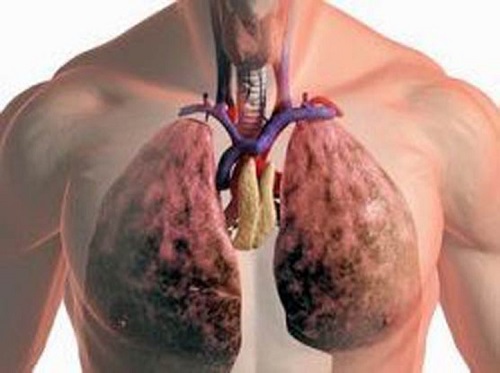
Tuberculosis was described in their writings by Hippocrates, Avicenna, Galen, Herodotus. In their writings, they described the symptoms and course of the disease and had considerable experience in the treatment of this disease.
The causative agent was first identified by the German scientist Robert Koch on March 24, 1882. And still M.tuberculosis is called bacillus or Koch's bacillus. And the day of the discovery of the pathogen - Koch's sticks on March 24 is considered "World TB Day".
For many years there has been such a stereotype: only those who are malnourished and have poor living conditions suffer from tuberculosis. However, it is not. Among those who fell ill and died from tuberculosis were very famous personalities: laureates Nobel Prize Erwin Schrödinger and Ramen Rolland, US President Andrew Jackson, Ottoman Sultan King Mahmud II, actress Vivien Leigh, Russian writers Vissarion Grigoryevich Belinsky and Anton Pavlovich Chekhov, composer Frederic Chopin...
How do you get tuberculosis
- The main source of infection is a person with pulmonary tuberculosis with an active form of the disease, i.e. which actively releases the pathogen into the external environment with the smallest droplets of sputum. It occurs when sneezing, coughing and talking. This route of infection is typical in 95% of cases. You should know that germs from a patient spread up to 2 meters when coughing, and up to 9 meters when sneezing. People around are especially susceptible to infection if there are patients with bronchitis, tracheitis and smokers in the environment. This category of people does not have a protective reaction of the ciliated epithelium, which lines the mucous membrane of the upper respiratory tract. With these diseases, the work of the ciliated epithelium is impaired.
- A more rare way of infection is alimentary, when consuming, for example, milk from animals with tuberculosis. People with digestive disorders are susceptible to this method of infection. Even less often, infection occurs when caring for sick animals. But in order for this route of infection to work, a more massive dose of microorganisms is needed than with the airborne route of infection.
- It is extremely rare, but it occurs, intrauterine infection of the fetus due to infection through the placenta.
- There is also a contact route of infection through damaged mucous membranes and skin, which occurs in isolated cases. IN this group should include medical personnel.
Mycobacterium is very stable in the external environment, it is highly resistant to acids, alkalis, alcohols and cold. It multiplies faster and prefers dark, unventilated and damp rooms. And, conversely, direct sunlight, heat and fresh air are detrimental to the pathogen. Dies from disinfectant solutions in their high concentration.
Risk factors for TB infection
It is possible that each of us encounters a patient with tuberculosis every day: in public transport, shops, hospitals, etc. But that doesn't mean it. That having met with such a patient, we will definitely become infected and get sick too. There is a risk group of people in whom a meeting with a tuberculosis patient can lead to the development of the disease in them too.
- Contact with a patient with tuberculosis. Family members, social and medical workers are in contact with the patient for a long time.
- Under unsatisfactory living conditions: lack of ventilation, access to direct sunlight, high humidity.
- Availability chronic diseases respiratory tract.
- A history of diabetes mellitus, gastric ulcer or duodenal ulcer; taking glucocorticoid drugs that suppress the immune system.
- Infection with the human immunodeficiency virus (HIV/AIDS).
- People leading an asocial lifestyle: alcoholics, drug addicts, as well as persons without a fixed place of residence and in places of deprivation of liberty, migrants and refugees.
Tuberculosis - signs of the disease
The clinical picture of the disease is varied. And now there is a localization of the disease not only in the lungs, but quite often tuberculosis of the bones, lymph nodes, urinary system, etc. is recorded.
With pulmonary tuberculosis, the clinical symptoms are very similar to those of pneumonia, bronchitis, which often leads to late diagnosis of tuberculosis. And only timely passage or radiography allows you to suspect this serious disease in time.
Cough. Tuberculosis is characterized by a long duration of 3 or more weeks. It usually starts at night and lasts a long time. Cough occurs as a result of the action of a toxin that produces a pathogen.
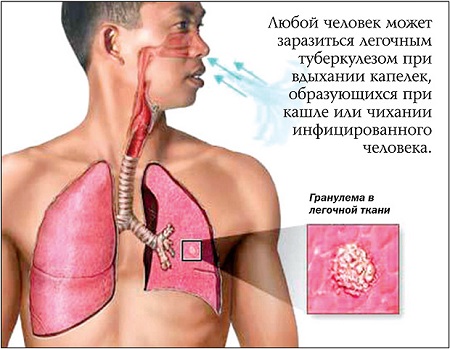
Hemoptysis.-e This is already one of the symptoms of tuberculosis of the lungs, and this suggests that the small arteries that supply the alveoli with blood are involved and affected in the process.
Subfebrile temperature. it is considered if it is 1-2 degrees higher than normal. With tuberculosis, the temperature may be normal throughout the day. But in the evening it rises and is accompanied by weakness. An increase in temperature is also a protective reaction of the body to a foreign agent. Later, chills appear in the arms and legs. The temperature is distinguished by its constancy, which does not happen, for example, with influenza or pneumonia. It is dangerous that many attribute such a temperature and chills to a cold or fatigue.
Increased sweating. This symptom is the most hallmark between other infectious diseases. Excessive sweating usually occurs at night. This occurs as a result of excitation of the thermoregulation center as a result of the interaction of the pathogen toxin and lymphocytes.
Pain in the chest. The appearance of pain in the chest means involvement in the pathological process of the pleura, which covers the lung tissue. The pleural lobes also cover the interlobar spaces, which have nerve endings. Pain occurs during coughing, so the nerve endings in the interlobar pleural lobes are irritated, hence the pain when coughing.
Malaise, general fatigue. Similar symptoms are present in other infections, this suggests that the body is struggling with intoxication, only with tuberculosis intoxication manifests itself brighter. This can include weight loss, but unlike cancer, for example, weight loss does not occur so quickly and for a longer time.
Dyspnea. As a result of damage to the lung tissue, the ability to provide the body with sufficient oxygen is reduced. With any physical activity, the need for oxygen supply increases, and the lungs cannot provide it, resulting in shortness of breath.
Why tuberculosis is dangerous
Tuberculosis is a dangerous infectious disease in which one or more foci of inflammation of tuberculous etiology can form in different organs. The lungs, eyes, bones, lymphatic system, skin, genitourinary system, etc. can be affected.
The danger to others lies in the ways of its transmission, infection by airborne droplets is especially dangerous. Tuberculosis bacilli can easily be transmitted by talking, sneezing, and even normal conversation. This can happen not only at home, where there is a patient, but, which is very dangerous, in a store, public transport, etc., since this disease does not manifest itself outwardly.
If a person's immunity is weakened, then the body cannot cope with the bacterium and the infection begins to develop in the body of a new host, and soon the first symptoms of the disease will be felt. Therefore, it is very important to identify the disease in time. Late detection of TB and improper treatment can lead to hard-to-treat drug-resistant TB. If untreated, the disease becomes chronic within one to two years. Mortality from untreated tuberculosis reaches 50%.
Dear readers! I told you how you can get tuberculosis and how it manifests itself. It is important to prevent this, so each of us must pass once every 1-2 years. Any disease is easier to prevent than to treat. But this conversation about tuberculosis is not over, in the next articles we will lay this conversation and talk about why the Mantoux reaction and vaccinations against tuberculosis are needed, whether they should be afraid, or maybe they are not needed at all.
healthy eating This is an easy way to health and longevity! Most people don't know anything about healthy eating. They heard something, read something, some of the acquaintances seem to be practicing and praising.
And each person is unique, therefore there are no general systems that would be suitable for everyone and for everyone. Only an individual system can bring you 100% benefit. Discover the art of harmonious nutrition, which gives perfect health, attractiveness and longevity!
There are few Ukrainians who do not know how sad the situation with tuberculosis is in our country. Rejection of the principles of work of the TB service of the times of the USSR that proved to be highly effective, scarce funding of the industry, insufficient vaccination of the population, unfavorable environmental conditions, a decrease in the level of well-being of citizens, alcoholism and drug addiction - all these factors play into the hands of tuberculosis infection, contributing to a decrease in immune protection, an avalanche spread of the disease , the formation of resistant strains of bacteria that are not amenable to therapy with standard combinations of anti-tuberculosis drugs. In the absence of real help a person is left face to face with a formidable infection from the state, and the chances for a healthy life depend only on himself, his sanitary literacy and willpower. The most important issue that worries the layman is the risk of contracting tuberculosis in various everyday situations. How not to get sick? - let's figure it out.
In order to have a substantive conversation about the possibility of infection with tuberculosis, first of all, we will analyze the meaning of the terms infection (infection) - in relation to tuberculosis, active tuberculosis, open and closed forms of tuberculosis.
Tuberculosis is a unique infection. Ingestion of a tubercle bacillus (Koch's bacteria, Mycobacterium tuberculosis) almost always leads to infection, and very rarely to the development of active disease. Infection (infection) with Koch's bacillus occurs once in a lifetime - usually in childhood or adolescence, at the first contact of a person with a microorganism. One or two Koch sticks that have entered the child's respiratory tract along with inhaled air lead to infection and the development of local inflammation, however, due to the high activity of the immune system, the body quickly copes with the infection and self-healing occurs. All these processes occur completely imperceptibly, have no clinical manifestations and, as a rule, do not lead to the development of active tuberculosis. The fact that tuberculosis infection has occurred, doctors learn from the results of the next Mantoux test, which in people infected with tuberculosis bacillus have very specific characteristics. Immunologically, the process of infection with a tuberculosis bacillus can be considered as a favorable phenomenon, because, thanks to the contact with the pathogen, the human body learns to recognize tuberculosis and fight it - this is how anti-tuberculosis immunity is formed.
Despite the fact that the immune system has overcome the pathogen, a certain amount of mycobacteria remains forever in the human body (mainly in the organs of the lymphatic system) in an inactive state. The presence of "sleeping" bacteria becomes the basis for the development of active tuberculosis in cases where the activity of immunity decreases and tuberculosis bacilli get out of control. However, this does not always happen - according to statistics, active tuberculosis (that is, tuberculosis with clinical manifestations, specific changes on the x-ray and in the results of laboratory tests) develops only in 1-5% of infected people. The highest risk of developing tuberculosis is in the first 2 years after primary infection - it is during this period of time that an infected person needs to be monitored by a phthisiatrician and (according to indications) preventive measures. I must say that by the age of 20-25, TB infection occurs in 90-95% of people, and most of these people (despite being infected with TB) remain healthy. That is Tuberculosis is not the same as being infected!
People infected (infected) with tuberculosis do not have tuberculosis, do not spread the tuberculosis bacillus and therefore are not dangerous to others. Usually, a person infected with tuberculosis has a positive Mantoux test, while the results of a lung x-ray and sputum analysis are normal. Repeated contact of an infected person with tuberculosis pathogens either has no consequences, or breaks down the immune defense and leads to the development of active tuberculosis (usually this occurs with a massive bacterial attack, contact with aggressive strains of tubercle bacillus, temporary or permanent immunodeficiency).
Active tuberculosis that has developed for one reason or another can occur in two forms - open And closed. An open form of tuberculosis (bacterioexcretion) is said to be when bacteriological examination (inoculation) or microscopy in the sputum, saliva and other secretions of the patient reveals Koch's sticks. If there are no bacteria in the secretions during repeated studies, the patient suffers from a closed form of the disease. The terms open and closed form of tuberculosis are more often used for pulmonary tuberculosis. However, bacterial excretion is also characteristic of other types of tuberculosis - tuberculosis of the lymph nodes, tuberculosis of the reproductive system, tuberculosis of the intestine, etc. The presence of bacterial excretion (BC+) is a very important indicator of the infectious danger of a patient, since tuberculosis can only be contracted from a person who releases Mycobacterium tuberculosis into the environment. However, there is one caveat here: due to the insufficient power of laboratory research methods, in some patients with an open form of tuberculosis, mycobacteria in sputum (and other secretions) cannot be detected. That is, being, officially, non-contagious, they pose a serious danger to others. Therefore, no doctor guarantees 100% safety for people who have contacts with patients with a closed form of tuberculosis. It is believed that contact with such a patient with about a 30% probability can lead to the development of an active form of the disease, the risk of infection increases with constant, close, prolonged contact.
So, a patient with an open form of tuberculosis is definitely dangerous, a patient with a closed form is potentially dangerous.
Contact options
The risk of developing tuberculosis directly depends on the nature of the contact and determines the preventive measures necessary in each specific case.
Theoretically, the lowest probability of developing the disease is with short-term contact with a TB patient in public transport, public places, on stairwells, etc. The simplest preventive measures help to reduce the risk of developing active tuberculosis in such a situation, such as a healthy lifestyle, a balanced diet and regular annual examinations (Mantoux test - for children and adolescents under 15 years of age, fluorography of the lungs - for adolescents over 15 years of age and adults), as well as mandatory washing hands after the street, regular cleaning and airing the premises.
The risk of developing active tuberculosis increases significantly with prolonged and regular contact with a tuberculosis patient (cohabitation, regular communication at work or in free time), as well as during contacts accompanied by the exchange of biological fluids (kisses, sexual relations). Healthy people who find themselves in such a situation fall into the category of “tuberculosis contacts” and should be examined by a phthisiatrician as soon as possible. The purpose of a TB examination is to rule out an active form of tuberculosis in a contact person and to identify indications for chemoprophylaxis with anti-TB drugs. Examination of contact persons includes, as a rule, a tuberculin test (Mantoux test), X-ray examination of the chest organs, sputum examination for the presence of tuberculosis bacillus, general clinical blood and urine tests. Contact children and adolescents are examined 4 times, adults - 2 times a year. Chemoprophylaxis is carried out in persons with the highest risk of developing tuberculosis (primarily in people with immunodeficiency states, persons exposed to massive exposure to aggressive strains of tuberculosis) with the help of 1-2 anti-tuberculosis drugs prescribed in minimal dosages.
An important preventive measure aimed at reducing the risk of developing the disease is the termination of contact with the bacteria. For this, a patient with an open form of tuberculosis is hospitalized in a hospital; contact persons are advised to temporarily interrupt personal communication with the patient (until the mycobacterium disappears from the discharge), sometimes patients with an active form of tuberculosis (especially in the chronic course of the disease with permanent bacterial excretion) are provided with a separate living space. The TB patient himself and his relatives should not consider temporary isolation as a life tragedy - in most cases, if the doctor's recommendations are followed in good faith, after 2 months of therapy, bacterial excretion stops and the patient ceases to be dangerous to the people around him. In situations where it is not possible to interrupt contact with a patient with an open form of tuberculosis, all contact persons are subject to long-term prophylactic therapy with anti-tuberculosis drugs.
Children. Children, due to the peculiarities of the immune system, are at increased risk for the development of active tuberculosis. Therefore, when a patient with tuberculosis appears in the family (regardless of the form of the disease), the contact of the child with this relative should be stopped, and the child should be registered with a phthisiatrician. Tuberculosis contacts and/or initially infected children and adolescents, after being examined by a phthisiatrician and excluding the active form of tuberculosis, are not contagious, not dangerous to others and can visit children's institutions (kindergartens, schools) even if they receive prophylactic treatment with anti-tuberculosis drugs .
pregnant. Contact with a TB patient during pregnancy leads to the development of the disease with almost the same probability as contact in a non-pregnant state. First of all, the contact must be interrupted and ensured that it does not repeat itself. A pregnant woman who has been in contact with a patient with tuberculosis must carefully monitor her state of health and, if the first signs of pulmonary pathology appear, consult a doctor (therapist, phthisiatrician) for an examination. With prolonged contact with a patient with an open form of tuberculosis, the examination of a pregnant woman is performed according to the generally accepted scheme (with the exception of an X-ray examination, which is carried out using special techniques in the presence of strict indications). In most cases, chest x-rays and anti-tuberculosis drugs are deferred until the postpartum period. Contact with a patient with tuberculosis is by no means an indication for termination of pregnancy. If high-risk contact occurred at the stage of pregnancy planning, it is necessary to postpone conception until the risk has completely disappeared.
prisoners. There is a very high risk of developing tuberculosis in contact with patients serving sentences in places of deprivation of liberty or former prisoners, since these people in the vast majority of cases are carriers of aggressive strains of tuberculosis that are resistant to most anti-tuberculosis drugs. Relatives visiting sick prisoners (in case it is not possible to refuse visits for some reason) are advised to come to visits in clothes made of materials resistant to disinfectants, a headscarf that covers their hair, and a 4-layer gauze mask that covers the mouth and nose. After the visit, clothes must be soaked in a disinfectant solution (chlorantoin, domestos) for 2 hours. During the entire period of increased risk, the contact person should be examined twice a year in a tuberculosis dispensary. You must be prepared for the fact that the phthisiatrician will prescribe prophylactic anti-tuberculosis treatment. Contacts of children with TB patients are highly undesirable.
« Contact without contact". Despite the absence of direct contact with the source of infection, people who have settled in an apartment (house) where a TB patient used to live are at serious risk. Koch's sticks remain viable in the environment for a long time (they live in room dust for about a month, in books - 3 months, in dark and basement rooms up to 4-5 months) and are quite capable of causing disease in new residents. To avoid health problems, before moving in, it is necessary to find out whether the final disinfection was carried out in the apartment - the treatment of the premises by the forces of the sanitary and epidemic station. If disinfection has been carried out, it is necessary to make cosmetic repairs and then safely move into new housing. If disinfection has not been carried out, it is highly not recommended to live in an apartment before it is carried out.
Concluding the topic, we will list the situations associated with tuberculosis contact, in which an urgent consultation of a phthisiatrician (or therapist) is necessary, and we will also give recommendations for elementary prevention of tuberculosis.
Examination of a phthisiatrician regarding contact with a patient with tuberculosis is indicated in the following cases:
- With close, prolonged contact with a bacterioexcretor.
- If there are among the next of kin who have recovered from tuberculosis (indicates a possible genetic predisposition to the disease).
- In the presence of diseases or conditions that cause a decrease in the activity of immunity, including when undergoing therapy with hormonal or cytostatic drugs.
- In the presence of bad habits (smoking, alcohol abuse, drug addiction), chronic stress.
- If children and adolescents came into contact with the patient.
Within a year after stopping contact with a patient with active tuberculosis, it is necessary to pay attention to the following symptoms, the appearance of which should be the reason for a premature x-ray of the lungs and a consultation with a phthisiatrician:
- Prolonged, unexplained weight loss.
- Dry cough lasting more than 3 weeks.
- Subfebrile body temperature.
- Enlarged peripheral lymph nodes.
- Increasing weakness, drowsiness.
- Chest pain, hemoptysis.
To reduce the likelihood of developing tuberculosis after a known or suspected exposure, it is recommended:
- Do not smoke or drink strong alcoholic drinks, beer, low-alcohol mixtures.
- Eat at least 150-200 g of foods rich in animal fats per day (meat, fish, eggs, milk, etc.).
- Eat enough vitamins of all groups.
- Do not use synthetic products (chips, fast food).
- Be outdoors more often and lead an active lifestyle.
- Avoid repeated close contact with patients with active tuberculosis.
- Undergo regular preventive examinations (fluorography of the lungs).
Finally
Tuberculosis is dangerous, one cannot but agree with this, but the situation is not hopeless. Modern medicine makes it possible to fight this disease, and timely prevention helps to prevent its development. Be attentive to yourself and your loved ones, lead a healthy lifestyle, do not hesitate to seek advice and help from doctors - this will increase your chances of a healthy long life. Take care of your health!



